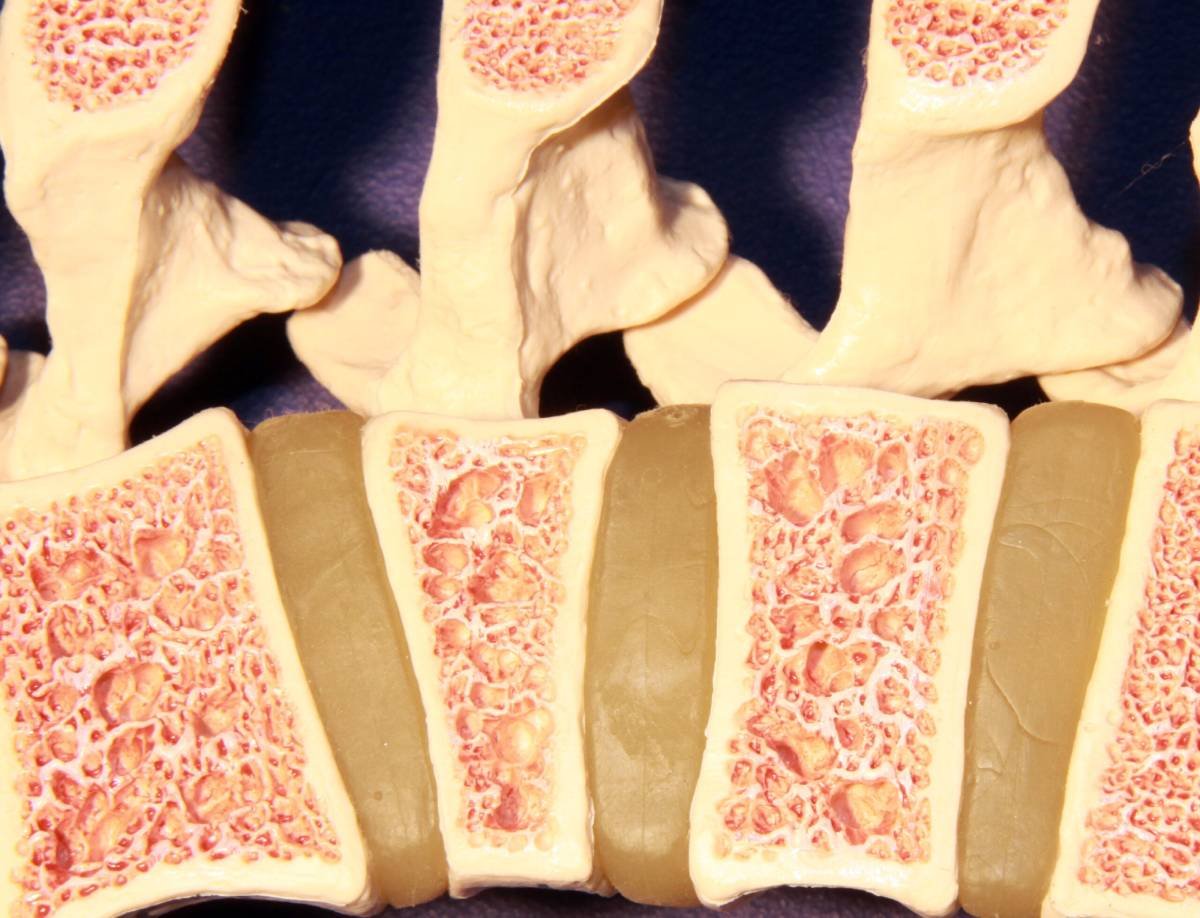Lajpat Nagar Metro Station, Block M, New Delhi, 110024
|096506 82102

Osteoporosis of Spine : An Overview
Once Osteoporosis of Spine sets in, your bones lose their density and strength. They become weak, brittle, and fragile bones that cannot withstand even the slightest strain. In fact, even a small fall, sudden bending, or coughing can cause a fracture, mainly in your spine, hip or wrists.




Osteoporosis of Spine: Risk Factors
Lifestyle
Abnormal habits may elevate risk of developing Osteoporosis of Spine.
- Sedentary life – those with desk jobs involving prolonged sitting, indoor office work, reduced outdoor physical activities, “couch potatoes”, have a greater risk of Osteoporosis of Spine.
- Alcohol – Excessive consumption (more than two alcoholic drinks per day) found to increase risk of Osteoporosis of Spine.
- Smoking – use of tobacco has shown to contribute to weak bones.
Diet
Osteoporosis of Spine may also occur to improper dietary intake
- Calcium – Prolonged deficiency of calcium in diet leads to decreased bone density.
- Decreased food intake – Disorders of eating such as bulimia nervosa and crash diets that severely restrict food intake lead to undernourishment and weakening bones in males and females.
- Abdominal surgery – Surgeries that remove portions of the digestive system such as bariatric surgery to reduce the stomach size .
Hormones
Certain conditions and drugs predispose to the development of Osteoporosis of Spine:
- Estrogen – reduced levels in women post menopause
- Testosterone – reduces in men as they age.
- Certain hormonal suppressive therapy like that for prostate cancer (reduce testosterone levels in men) and for breast cancer (reduce estrogen levels in women) can accelerate bone loss.
- Thyroid hormone - excess can cause bone loss – as seen in hyperactive thyroid gland or taking too much thyroxine supplementation.
- Parathyroid and adrenal glands - Osteoporosis of Spine has also been associated with excess hormones from these other glands
Medical conditions & Medications
Certain conditions and drugs predispose to the development of Osteoporosis of Spine:
- Lupus
- Multiple myeloma
- Rheumatoid arthritis
- Celiac disease
- Inflammatory bowel disease
- Kidney or liver disease
- Steroids: Prolonged use in cancer, transplants etc., can interfere with the bone-rebuilding process and cause Osteoporosis of Spine
Osteoporosis of Spine: Causes, Symptoms, & Warnings
Most patients do not have any symptoms. Any sort of back pain ranging from diffuse dull aching to severe debilitating symptoms.
The “Red flags” especially in elderly patients include:
- Sudden, severe back pain – may or may not be related to a pre-existing injury
- Pain worsening on standing or walking
- Difficulty straightening or bending or twisting back
- Change in shape of spine – tendency to remain stooped
- Pain persisting even on lying down

Non-Surgical Treatment for Osteoporosis of Spine
Our Osteoporosis of Spine treatment is primarily centred around fracture prevention and bone strengthening with medication and lifestyle changes.
Medications
As suggested by your doctor include
- Calcium and Vitamin D supplements
- Medicines to prevent bone loss and help bone building – Bisphosphonates, Hormonal therapy.
Lifestyle
Lifestyle modification & home remedies include:
- Stop smoking
- Avoid excessive alcohol consumption
- Prevent falls.
Surgical Treatments for Osteoporosis of Spine
Doctors prioritise minimally invasive surgical options to rectify osteoporotic fractural damage to the spine. Our top minimally invasive surgical suggestions are:
Vertebroplasty is a medical procedure that entails injecting cement into a fractured or damaged spinal bone with the goal of alleviating pain. Frequently utilised to address compression fractures, often associated with Osteoporosis of Spine and the resultant compromise in bone strength, this intervention serves to strengthen the spinal bones or vertebrae, effectively relieving pain.
In this surgical procedure, a small incision is made in the back, and a tiny tube is inserted to establish a precise pathway to the affected fracture area. Once the tube reaches the location, our surgeons inflate a balloon into the vertebrae. The fractured bones are realigned through this method, thereby alleviating pain and generating a cavity. The balloon is removed, and the cavity is filled with bone cement to strengthen and stabilise the bone.
Stentoplasty is a specialised technique designed for the treatment of osteoporotic vertebral compression fractures. This procedure entails the insertion of a stent into the collapsed vertebra, subsequently expanding it to restore vertebral height. The process also involves the injection of bone cement for stabilisation, resulting in the effective relief of pain and the restoration of spinal integrity. Notably, this technique is associated with a low-risk profile.
